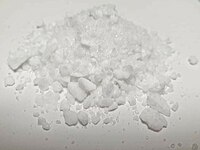
A comparison between the properties of natural hydroxyapatite produced by cold isostatic pressing and spark plasma sintering techniques
Sign Up to like & getrecommendations! Published in 2017 at "Journal of the Australian Ceramic Society"
DOI: 10.1007/s41779-017-0158-z
Abstract: The natural hydroxyapatite (HA) extracted from cattle bone was produced by cold isostatic pressing (CIP) and spark plasma sintering (SPS) techniques and sintered at 1350 and 1150 °C, respectively. Scanning electron microscope (SEM), X-ray diffraction (XRD)… read more here.
Keywords: produced cold; plasma sintering; spark plasma; cold isostatic ... See more keywords

A hydrothermal synthesis of natural hydroxyapatite obtained from Corbicula moltkiana freshwater clams shell biowaste
Sign Up to like & getrecommendations! Published in 2018 at "Materials Letters"
DOI: 10.1016/j.matlet.2018.07.034
Abstract: Abstract In this study, the natural hydroxyapatite (HA) has been obtained from Corbicula moltkiana shell (CS), which are available as waste from local food processing. The shell can be used as an inexpensive source of… read more here.
Keywords: hydroxyapatite obtained; corbicula moltkiana; hydroxyapatite; obtained corbicula ... See more keywords

Natural Hydroxyapatite: Green Catalyst for the Synthesis of Pyrroles, Inhibitors of Corrosion
Sign Up to like & getrecommendations! Published in 2021 at "Journal of Chemistry"
DOI: 10.1155/2021/6613243
Abstract: Polysubstituted pyrroles have been synthesized in good yields via a four-component one-pot reaction of 1,3-dicarbonyl compounds, amines, aldehydes, and nitroalkanes using natural hydroxyapatite (HAp) as an efficient green catalyst. This strategy provides advantages such as… read more here.
Keywords: catalyst synthesis; green catalyst; hydroxyapatite green; catalyst ... See more keywords